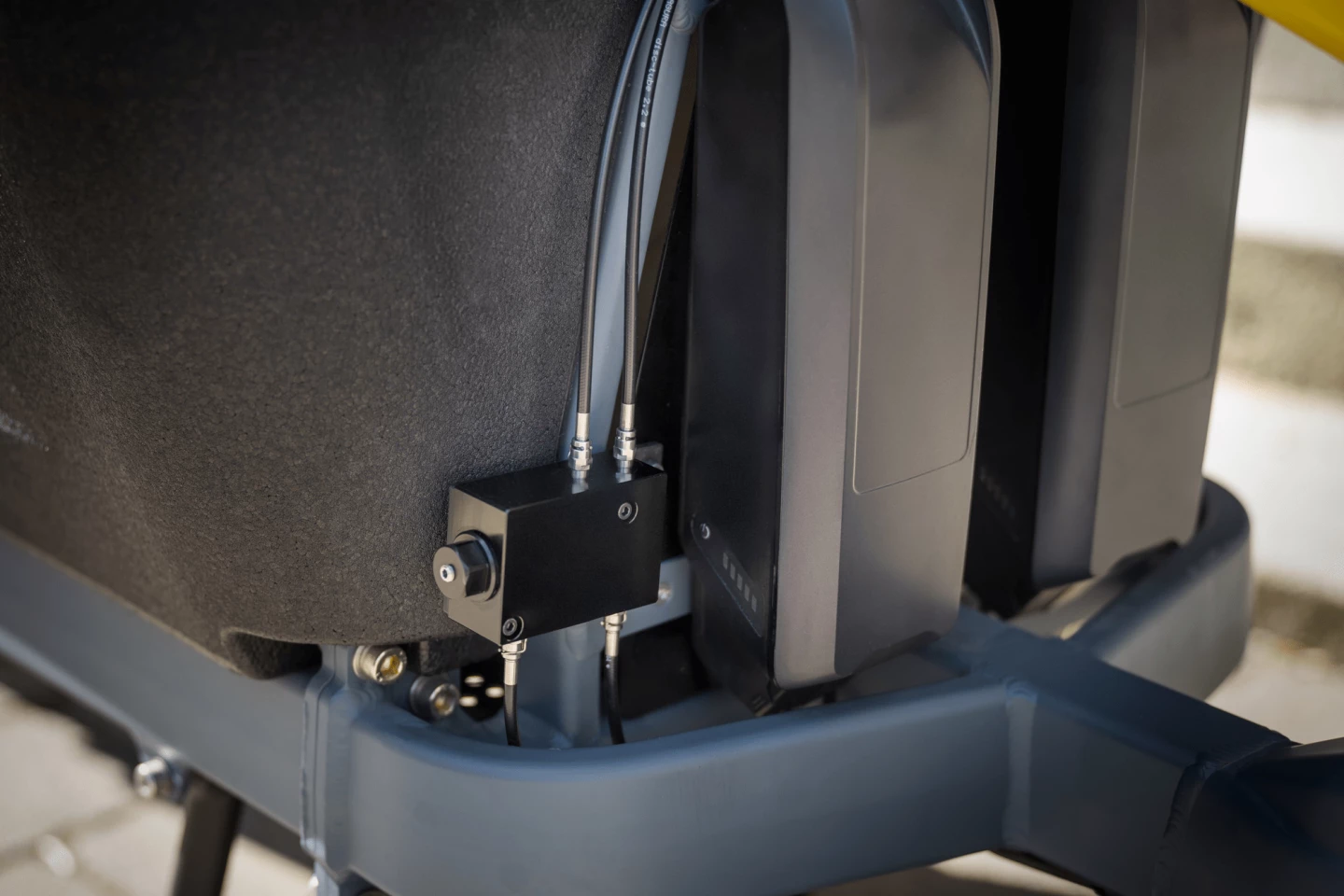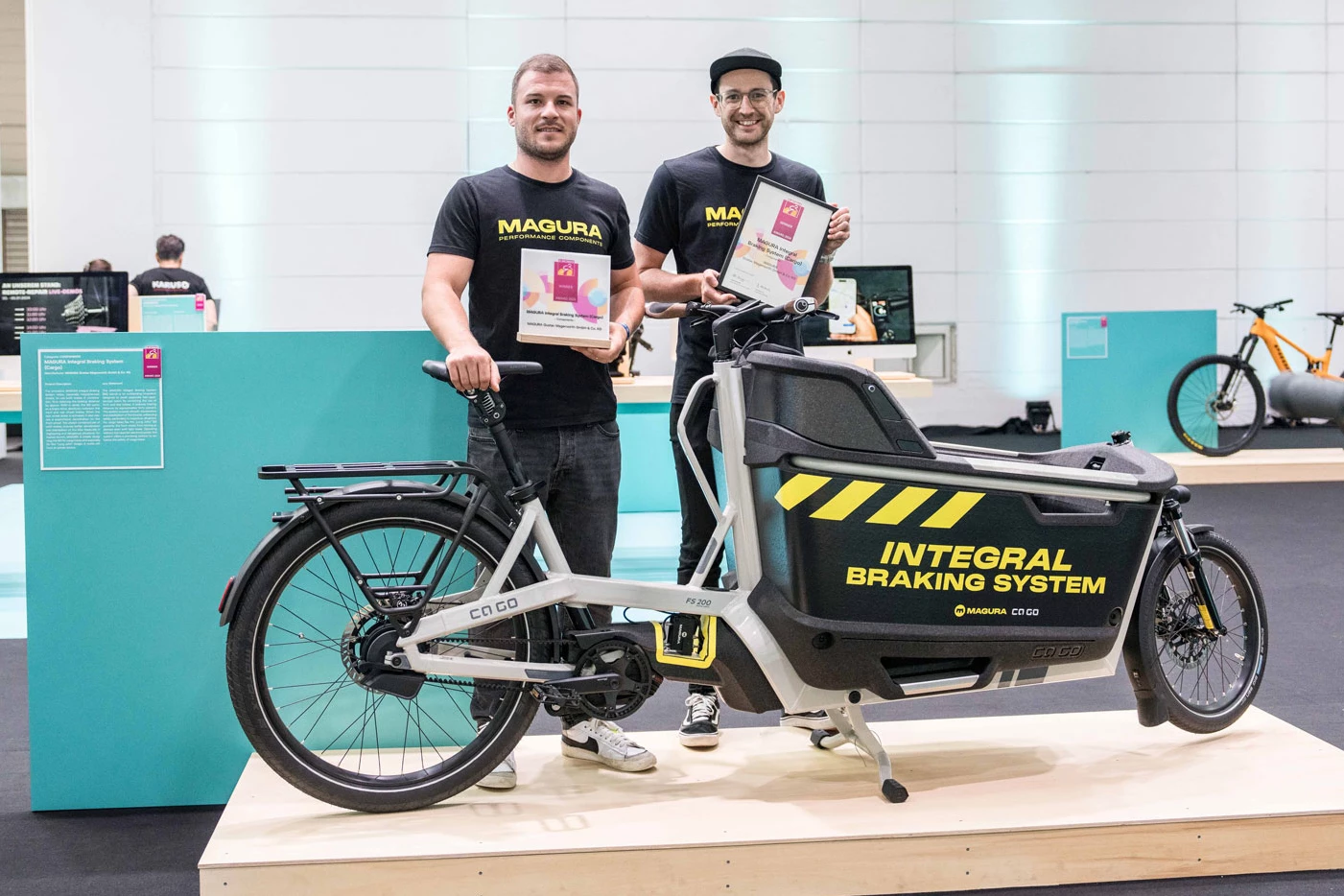If you shy away from applying your bike's front brake, you're not alone. That's why Magura created its Integral Braking System (IBS), which automatically modulates stopping power between both brakes via a single hand-pull.
As most experienced cyclists already know, the front brake provides the most stopping power.
That said, fear of flying over the handlebars keeps many riders – particularly newbies – from using that brake as much as they should. This not only robs them of braking power but also decreases their stability when braking, plus it causes the rear brake pad to wear out prematurely.
That's where IBS is designed to come in.
Optimized for use with Magura's existing MT C4 hydraulic braking system, the setup essentially just consists of a frame-mounted module that's slightly larger than a pack of cigarettes. Both hydraulic hoses run from the handlebar levers into that unit, with two other hoses running from the unit to the front and rear brake pistons.

Utilizing a purely mechanical (non-electrical) system, the module automatically activates both brakes when just one brake lever is pulled. As Magura describes it, "When the rear brake is applied, the IBS also provides a simultaneous and proportional deceleration of the front wheel." Many motorcycles already utilize similar technology.
The company additionally states that a single-handed brake application using IBS results in as much as a 40% shorter braking distance than a rear-brake-only stop on a non-IBS bike. That said, due to legal requirements, all IBS-equipped bikes also retain traditional redundant front and rear braking systems.

Magura first debuted IBS at Eurobike 2023, as a design study. At this year's show – where the system won an award – Magura announced IBS' first commercial usage, in Ca Go's FS e-cargo bike. Other models should follow later this year.
For now at least, IBS is not available as an aftermarket retrofit for existing bikes.
Source: Magura





